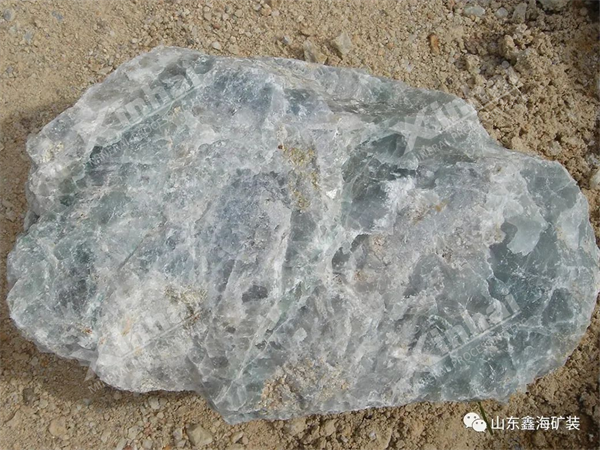Fluorspar ore may contain various impurities that can affect its color, transparency, and other physical properties. Common impurities in fluorspar ore include iron, manganese, sulfur, chlorine, arsenic, lead, and silicates.

In general, magnesium oxide is not a major impurity in fluorspar. The chemical composition of fluorspar is mainly calcium fluoride (CaF2), with relatively low levels of magnesium oxide (MgO). However, during the natural formation process of ores in different geological conditions and ore genesis, trace amounts of impurities may be present in minerals.
In fluorspar, magnesium oxide (MgO) can exist in various forms, depending on the chemical composition and physical characteristics of the ore deposit. Here are some possible forms:
1. Solid Solution: Magnesium oxide can exist in the form of a solid solution within the fluorspar lattice. This means that magnesium ions can partially replace calcium or fluoride ions in the lattice, forming a solid solution. This substitution is usually local and partial, not complete.
2. Impurities: Magnesium oxide may exist as impurities in the form of tiny particles or crystals dispersed in the fluorspar matrix.
3. Associated Minerals: Sometimes, magnesium oxide may exist in the form of associated minerals that occur together with fluorspar. This means that within the same ore deposit, other minerals containing magnesium oxide may coexist with fluorspar.
Understanding the form of magnesium oxide is crucial in choosing appropriate extraction processes and engineering designs during the ore processing and extraction. This often requires detailed assays and analyses of the ore.
Common methods for removing magnesium oxide from fluorspar include:
1. Froth Flotation: Utilizing the differential flotation properties of magnesium oxide and fluorspar in the slurry to make magnesium oxide and other impurity minerals settle while allowing fluorspar to float. Specific reagents are often used to adjust the slurry's properties, making magnesium oxide less floatable compared to fluorspar.
2. Gravity Separation: Using gravity separation equipment such as gravity concentrators or centrifuges to separate fluorspar from magnesium oxide-containing ores. Adjusting the operational parameters of the equipment causes differential settling rates for magnesium oxide and other minerals.
3. Chemical Methods: Using chemical techniques like acid washing or alkali washing to dissolve or precipitate magnesium oxide. This method may involve the introduction of certain chemical reagents, and environmental impacts and subsequent treatment need to be considered.
4. Fluorination Method: Reacting magnesium oxide-containing fluorspar ore with fluorides to produce magnesium fluoride, while fluorspar remains unaffected. Magnesium fluoride can then be separated from the ore using physical methods.
5. Magnetic Separation: Exploiting the different magnetic properties of magnesium oxide and fluorspar in a magnetic field to remove magnesium oxide minerals from the ore.
When selecting a specific removal method, factors such as the ore's specific properties, process requirements, and economic costs need to be considered. Laboratory tests and industrial trials are typically conducted to determine the most suitable magnesium oxide removal method for a particular situation.